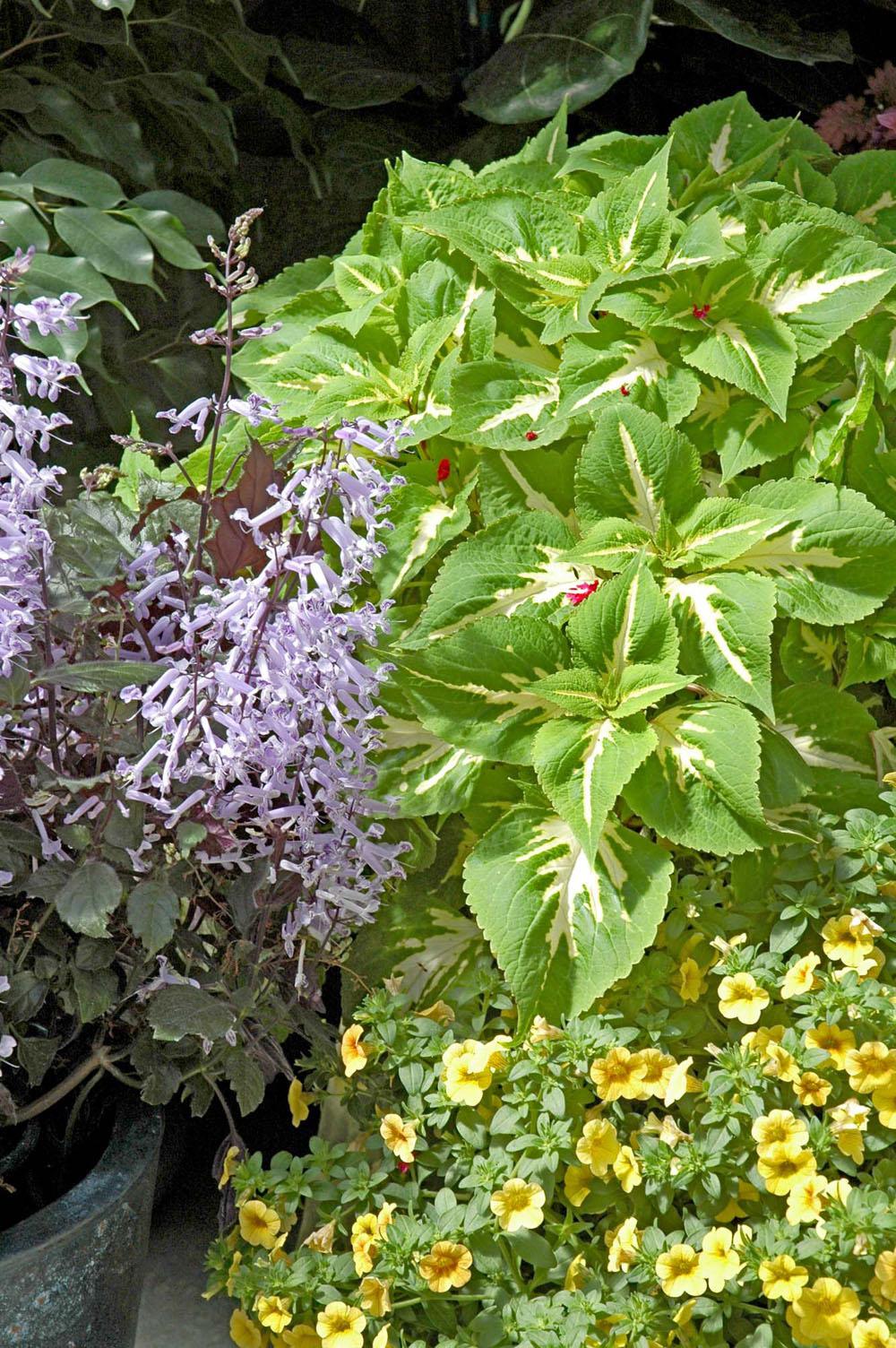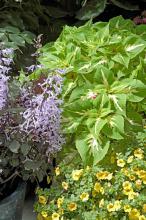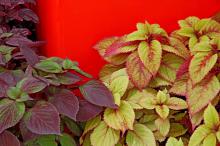Information Possibly Outdated
The information presented on this page was originally released on May 17, 2007. It may not be outdated, but please search our site for more current information. If you plan to quote or reference this information in a publication, please check with the Extension specialist or author before proceeding.
New perillas offer long performance
By Norman Winter
MSU Horticulturist
Central Mississippi Research & Extension Center
Magilla perilla became an instant hit a few years back probably because of its funny name that appealed to a generation who grew up watching Magilla Gorilla. It has since reached legendary status because it is a tough-as-nails plant for sun or shade that works in any style garden.
Even I could have marketed a plant with a name like that, but now there is another one, this one called Magilla Vanilla. In speaking engagements, audiences chuckle when I show it on screen and say it is Magilla Vanilla perilla.
Magilla Vanilla is green with a creamy vanilla, making it a good combination with any other colors. The world of perilla also includes a great selection called Gage's Shadow, a perilla/coleus hybrid. This variety is being brought to us by Proven Winners, and it has shades of burgundy, purple and dark green.
Gage's Shadow has captured awards from Minnesota to Tennessee and was a favorite at the U.S. National Arboretum. I grew it last summer and can truthfully say it is a racehorse. It can reach 5 feet tall and will work as screen or backdrop in the flower border.
The perilla is not very well known. A few gardeners may be familiar with an old-fashioned, rusty purple selection that almost looks like a small basil and is used as such. But Magilla and Gage's Shadow are different. These varieties easily reach 36 inches tall with a mounded shape. Kept watered and fed, they may grow more than 42 inches tall by late summer. Colors develop best in sun or bright, filtered light.
In the landscape, perilla prefers fertile, well-drained soil. Amend tight or heavy soil with 3 to 4 inches of organic matter like compost or humus. Grow three to five plants spaced 18 to 24 inches apart for a breathtakingly beautiful display.
Use in combination with pink or magenta shades of periwinkles for a colorful, tropical look. In fact, the vibrant colors of the perilla make them ideal as understory plantings to large bananas, upright elephant ears or pink cannas. Try using Gage Shadow in a lush tropical setting with purple elephant ears like Antiquorum or Black Magic.
Boldly use perilla with ornamental grasses. The most obvious companion would be purple fountain grass. The Magilla vanilla also partners incredibly well with Mona Lavender plectranthus.
Keep your perillas watered and mulched during the growing season. Feed with a light application of a slow-release, balanced fertilizer one month after planting and again in mid-summer.
The perilla has some of the same cultural requirements as coleus, such as a good pinching in mid- or late-summer that will keep the plant bushy.
Perilla is one of those plants that offers today's hurried gardeners easy-to-grow, environmentally friendly plants that will aesthetically enhance the home landscape.









